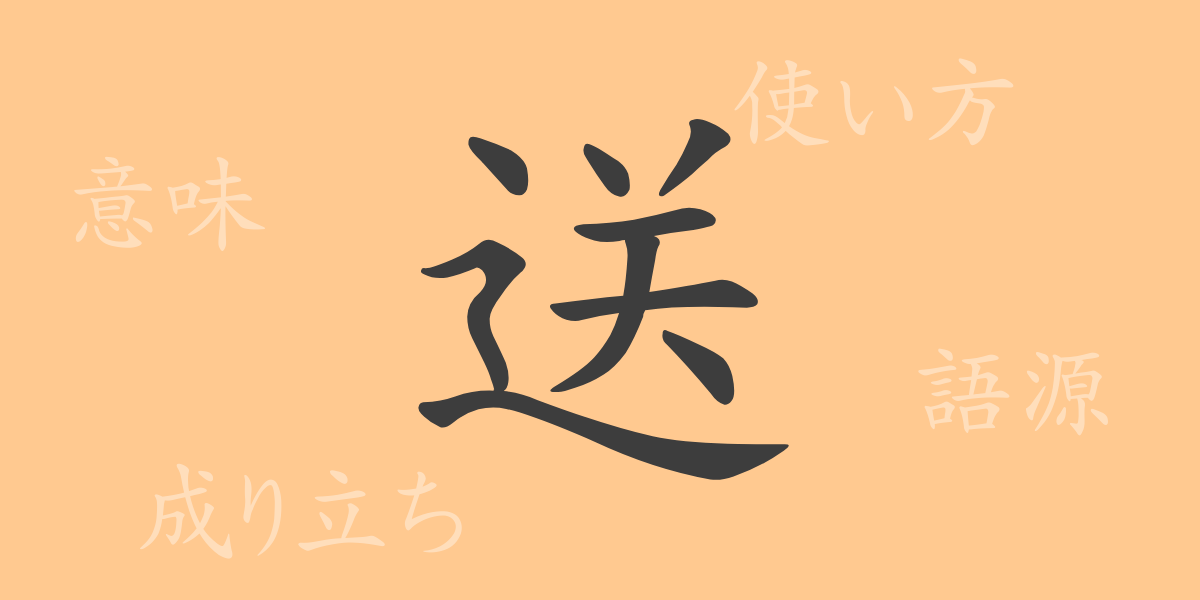The beauty of Japanese language lies in its rich expressions, where each Kanji represents a deep cultural and historical significance. “送” (おく – ソウ) is one such commonly used Kanji integral to daily life in Japan. This article delves into the origins of “送” (おく – ソウ), its contemporary uses, and its presence in idioms and proverbs, offering a thorough exploration of this Kanji’s fascinating world.
Origins of 送 (おく – ソウ)
The Kanji “送” (おく – ソウ) evolved from ancient Chinese pictographs, originally depicting the act of ‘walking along a path to see someone off.’ It incorporates the radical for walking, ‘辵’ (しんにょう), and a modified form of ‘关’, which signifies a gate. This composition gave birth to the concept of ‘leaving through a gate to escort someone,’ and over time, “送” (おく – ソウ) came to encompass various meanings associated with the act of sending.
Meaning and Usage of 送 (おく – ソウ)
“送” (おく – ソウ) carries meanings related to the act of moving something or someone from one place to another, such as ‘to send,’ ‘to dispatch,’ or ‘to see off.’ It also encapsulates more abstract notions, such as transmitting messages or emotions. In Japanese, this Kanji is used to describe sending people or goods to a destination or giving something as a gift.
Readings, Stroke Count, and Radical of 送 (おく – ソウ)
The Kanji “送” (おく – ソウ) offers various readings and structural insights:
- Readings: On’yomi “ソウ” (ソウ), Kun’yomi “おく・る” (おく・る)
- Stroke Count: Total of 9 strokes
- Radical: 辵 (しんにょう – movement)
Idioms, Phrases, and Proverbs Using 送 (おく – ソウ) and Their Meanings
There are numerous idioms and phrases that include “送” (おく – ソウ), each conveying specific situations or emotions:
- 送別会 (そうべつかい) – A farewell party.
- 見送る (みおくる) – To see off or bid farewell while watching someone depart.
- 贈答品 (ぞうとうひん) – Gifts intended for exchange.
Summary on 送 (おく – ソウ)
The Kanji “送” (おく – ソウ), from its formation to modern usage, has a long history and remains deeply connected to the lives of Japanese people. Encompassing both physical and emotional conveyances, this Kanji symbolizes the diversity of communication. Through this article, we hope you gain a deeper understanding of “送” (おく – ソウ), enriching your comprehension of the Japanese language.

























